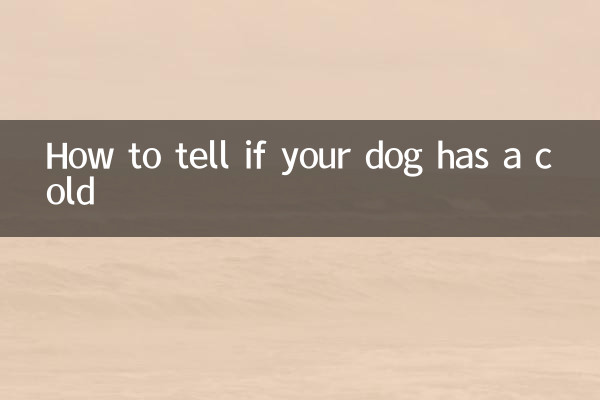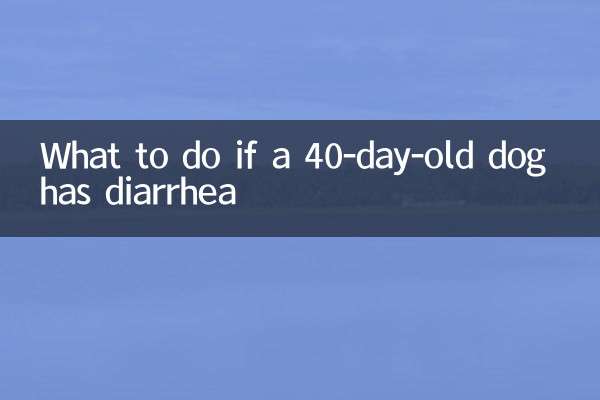How to tell if your dog has a cold? Comprehensive analysis of symptoms and coping methods
Recently, the topic of pet health has become increasingly popular on social media, especially the issue of dogs catching colds during the change of seasons, which has triggered widespread discussion. This article will combine the hot topics on the Internet in the past 10 days to sort out the typical symptoms, judgment methods and countermeasures of dog colds, and help you take better care of your dog.
1. Common symptoms of dog colds

Symptoms of colds in dogs are similar to those in humans, but they manifest themselves in slightly different ways. The following is the recent high-frequency symptom data collected by the pet medical platform:
| symptom | frequency of occurrence | Severity |
|---|---|---|
| sneezing frequently | 89% | Mild |
| Runny nose (clear or pus) | 76% | Moderate |
| Cough (dry or with phlegm) | 68% | Moderate |
| Loss of appetite | 52% | Moderate to severe |
| Increased eye discharge | 47% | Mild |
| listless | 63% | Moderate to severe |
2. How to distinguish a common cold from a serious disease?
Recently, pet doctors emphasized on a short video platform that the following symptoms may indicate more serious diseases (such as canine distemper, pneumonia, etc.) and require immediate medical treatment:
1.persistent high fever(The body temperature exceeds 39.5℃ and does not go down for 24 hours)
2.Purulent nasal dischargeaccompanied by bloodshot
3.difficulty breathingor severe abdominal rise and fall
4.Total refusal to eatmore than 24 hours
5.twitchor confusion
3. Home care methods (summary of recent popular suggestions)
| Nursing measures | Applicable scenarios | Things to note |
|---|---|---|
| Keep the environment warm | All cold symptoms | Avoid blowing air conditioner/fan directly |
| Add warm water | Loss of appetite | A small amount of glucose can be added |
| steam therapy | When nasal congestion is severe | Bathroom steam 10 minutes/time |
| Nutrient paste supplement | Food refusal period | Choose low-fat and easy-to-digest varieties |
4. Preventive measures (tested recommendations from pet bloggers)
1.seasonal transition periodWearing pet clothing (recently, sales of pet clothing on an e-commerce platform increased by 120%)
2.Get vaccinated regularly(especially canine distemper and parainfluenza vaccines)
3.Enhance immunity: Appropriate supplement of vitamin C (need to follow doctor’s advice)
4.After going out on a rainy dayDry your foot pads and abdomen promptly
5.avoid contactOther dogs who are already sick
5. When do you need medical treatment?
According to recent pet hospital admissions data, it is recommended to seek treatment within 12 hours in the following situations:
• Puppies (under 6 months old) showing any cold symptoms
• Elderly dogs with a history of chronic diseases
• Symptoms persist for 3 days without improvement
• Development of complications from diarrhea or vomiting
• Body temperature fluctuates by more than 1°C (normal range 37.5-39°C)
6. Special reminder
The "human cold medicine treatment method" that has been popular on the Internet recently has serious risks!Acetaminophen and other ingredients are fatally toxic to dogs, be sure to use special medications prescribed by your veterinarian.
Through the above structured analysis, I hope it can help you accurately determine the cold status of your dog. Remember: When symptoms go beyond a common cold, prompt professional veterinary help is the best option. The climate has been changing recently. It is recommended to pay more attention to the daily changes in your dog's condition and take preventive measures.

check the details

check the details